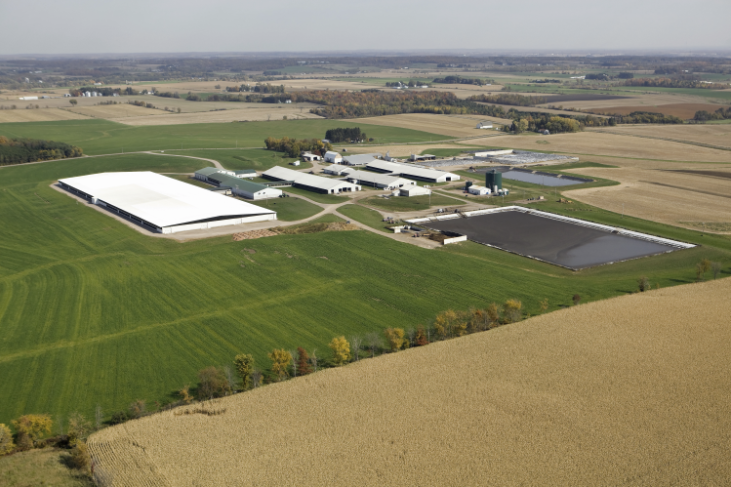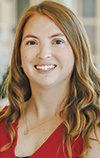When it comes to cattle, genetics and crops, dairy producers excel at planning ahead. However, creating a plan for retirement and succession doesn’t always come as naturally.
During the Pennsylvania Center for Dairy Excellence’s Dairy Financial and Risk Management Conference, Lamar King from Bare Wealth Advisors in Pennsylvania shared how to start thinking about the big picture and the different aspects that go into retirement plans.
“The financial side is really important, but when you transition from one life stage to another, there’s a whole lot more than numbers that goes into it. Dairy farmers often don’t know what life without dairy is,” King said. “But when we talk about being intentional about managing wealth to align with your God-given purpose, it’s deeper than what you do on a daily basis. How do you deal with the emotions, the spiritual side and the family relational side? How does that all go into the plan?”
King grew up on a potato farm and
raised heifers for his grandfather’s dairy farm. He says flexibility is key to creating a holistic plan that has value for each generation.
“Planning ahead of time gives you flexibility to make changes in that plan. But if you wait until the last minute, you’re making a very big decision in a short period of time. That’s going to have lasting effects on you and the next generation,” King explained. “Planning ahead brings in the holistic piece. You’re not just forced into making a tax or estate decision, but you can also include relationships, timing and build in flexibility for the life of the plan.”
To help producers and advisers create purposeful succession plans, King shared several tools they can use to begin planning for retirement with balance, generosity and the future in mind.
Finding balance and flexibility: Assets and IRAs
According to King, many dairy farm families put everything they earn back into the operation. They consider what’s enough for now without considering what is enough 10 to 20 years from now. He encouraged producers to find a balance between both generations.
“The sale is going to be somewhere between giving [the farm] away for free or selling it for market value. In between, there has to be a balance of what’s enough for the exiting generation and what the incoming generation can actually afford,” he said.
King encouraged families to think about what their lifestyle will look like in retirement and plan accordingly. By investing in assets outside of the dairy business, such as additional rental properties, another business with siblings, an off-farm job or an individual retirement account (IRA), producers can add flexibility into their retirement plan and prepare for the lifestyle they have in mind.
“The use of an IRA for a farming operation can be a really nice tool for preparing for what the future holds and allows you to save ahead of time,” King explained. “Milk prices, feed costs and annual profits go up and down, so there is a lot of fluctuation of income with dairies. If you’re putting money into a traditional IRA on the good years and then convert it to a Roth IRA in a year of loss, there may be tax deductions, and it offers flexibility.”
If a dairy farm family has more assets, they could potentially transition the farm for a lower price. This can equate to less debt for the next generation, according to King. “This can be really powerful, especially if it’s a tight cash flow situation depending on the size of the operation,” he added.
Considering now and later: Life insurance
While farmers are often natural planners within their operations, planning ahead on their business transition is just as important to help hedge potential risks that come with successions.
“Farmers are really good at doing this within their own businesses. They’re thinking about the genetic decisions they’re making today and how they impact the future. They make seed decisions and think about how their harvest is going to go,” King shared. “We need to continue asking these questions to get them to think beyond that in terms of business transition.”
One tool that can help manage business risk is life insurance, especially if producers are in a partnership with family members or non-family members, King said. Without an established life insurance policy, the dairy operation could be at risk if an unexpected loss occurs.
“If one of the main operators or owners passes away and you don’t have a plan in place, now someone needs to buy that owner and manager out of the business,” King explained. “Not only is the business having to cash flow someone on a 10-year buyout period, but they also have to replace that owner.”
Ultimately, considering the future and how life insurance can help alleviate risk – and communicating to get the entire family or team on board – is an important part of retirement planning.
Committing to generosity: Giving grain
When many families think about retirement, they reflect on how they want to give back to the community. However, King encouraged dairy teams to be generous with each other as well.
“All good plans involve generosity. Generosity comes in a lot of shapes and sizes when it comes to a transition plan,” he said. “Generosity in the way your attitudes are, but also within the use of the money as opposed to holding on and claiming everything.”
Generosity within your family and team can help you establish a succession plan that is purposeful and beneficial to everyone. While you don’t give for the purpose of tax benefits, King says generosity within your community can actually increase your ability to give back. “If you can do something different with the way you give and get a tax benefit, it provides you with more to give,” he added.
One example he shared is the idea of giving grain. For many farms that sell crops or excess feed outside of the farm, giving grain instead of selling it can sometimes turn into cash.
“It keeps that sale off your farm schedule across federal, state, local and self-employment taxes. And now you get a benefit for your giving,” King explained. “If you’re taking a standard deduction, one thing all farmers who are selling and are generous should do, is giving grain. It’s a really neat tool.”
King also suggested giving to charities ahead of time, such as designating a certain portion of real estate to go to charity. This can provide farms with more flexibility and can be done ahead of the farm sale. He also shared that, depending on the tax structure, LLCs may be able to give a portion to charity so part of the business’s income can be tax-free all along, as opposed to giving it after tax.
At the end of the day, King reminded producers and consultants that asking the tough questions can help families establish clear, flexible plans that benefit both the exiting generation and the incoming owners. How much is enough? What does the future look like? How can we give security to the whole family? Start the conversation, work with a financial adviser who can explain your options, and the steps forward will follow.







